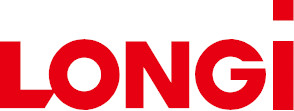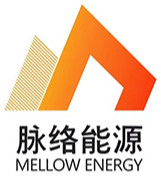Halocell Energy
 Halocell Energy is focused on developing perovskite solar cell technology. Halocell Energy was renamed in 2023 from Greatcell Energy.
Halocell Energy is focused on developing perovskite solar cell technology. Halocell Energy was renamed in 2023 from Greatcell Energy.
Halocell is dedicated to advancing the performance, stability, and scalability of perovskite solar cells to make them a viable and competitive alternative to traditional silicon-based photovoltaics.
Halocell uses halide elements in its perovskites along with many other aspects of cutting-edge materials science to harvest light across various settings and commercial applications. It develops products for indoor devices, outdoor devices and industrial assets.



 Hiking PV, AKA Shenzhen Hiking PV, is a company dedicated to the R&D, manufacturing, and application of advanced energy technology.
Hiking PV, AKA Shenzhen Hiking PV, is a company dedicated to the R&D, manufacturing, and application of advanced energy technology.  France-based Holosolis is a solar developer that was founded by three European entities: EIT Innoenergy, a clean-tech investor based in the Netherlands and financed by the EU; IDEC Group, a real estate developer in France; and TSE, a prominent solar energy producer in France and a leader in agrivoltaics.
France-based Holosolis is a solar developer that was founded by three European entities: EIT Innoenergy, a clean-tech investor based in the Netherlands and financed by the EU; IDEC Group, a real estate developer in France; and TSE, a prominent solar energy producer in France and a leader in agrivoltaics.  Anhui Huasun Energy Co., Ltd ( "Huasun Energy"), founded in July 2020, is a technological innovation enterprise specialized in the R&D and large-scale manufacturing of ultra-high efficiency N-type silicon heterojunction (HJT) solar wafer, cell and module. In 2023, it was implied that the Company is also working on heterojunction-perovskite tandem solar cells.
Anhui Huasun Energy Co., Ltd ( "Huasun Energy"), founded in July 2020, is a technological innovation enterprise specialized in the R&D and large-scale manufacturing of ultra-high efficiency N-type silicon heterojunction (HJT) solar wafer, cell and module. In 2023, it was implied that the Company is also working on heterojunction-perovskite tandem solar cells.
 Jiangsu Akcome Science and Technology Co., Ltd. was founded in 2006. It was listed on Shenzhen Stock Exchange (stock code 002610) in 2011 and is a Chinese new energy enterprise, headquartered in Hangzhou, Zhejiang Province.
Jiangsu Akcome Science and Technology Co., Ltd. was founded in 2006. It was listed on Shenzhen Stock Exchange (stock code 002610) in 2011 and is a Chinese new energy enterprise, headquartered in Hangzhou, Zhejiang Province. Jinko Solar (also referred to as "JinkoSolar") is a China-based global solar technology company. Jinko Solar was listed on the STAR Board of the Shanghai Stock Exchange in 2022, and JinkoSolar Holding Co., Ltd., its indirect controlling shareholder, was listed on the New York Stock Exchange in 2010.
Jinko Solar (also referred to as "JinkoSolar") is a China-based global solar technology company. Jinko Solar was listed on the STAR Board of the Shanghai Stock Exchange in 2022, and JinkoSolar Holding Co., Ltd., its indirect controlling shareholder, was listed on the New York Stock Exchange in 2010. Founded in 2000, LONGi Green Energy Technology Co., Ltd. (LONGi) is a solar technology that develops solutions for large-scale power plants and for different industries and households with its innovation-focused development. Eventually, it also plans to supply "Green Power + Green Hydrogen" solutions for global zero-carbon development.
Founded in 2000, LONGi Green Energy Technology Co., Ltd. (LONGi) is a solar technology that develops solutions for large-scale power plants and for different industries and households with its innovation-focused development. Eventually, it also plans to supply "Green Power + Green Hydrogen" solutions for global zero-carbon development. Mellow Energy, a China-based perovskite solar module manufacturer, was founded in August 2022. It is also sometimes called Vein Energy. The Company was incubated by the New Energy Technology Research Institute of Jinan University and is led by Professor Mai Yaohua, the dean of the institute.
Mellow Energy, a China-based perovskite solar module manufacturer, was founded in August 2022. It is also sometimes called Vein Energy. The Company was incubated by the New Energy Technology Research Institute of Jinan University and is led by Professor Mai Yaohua, the dean of the institute.
